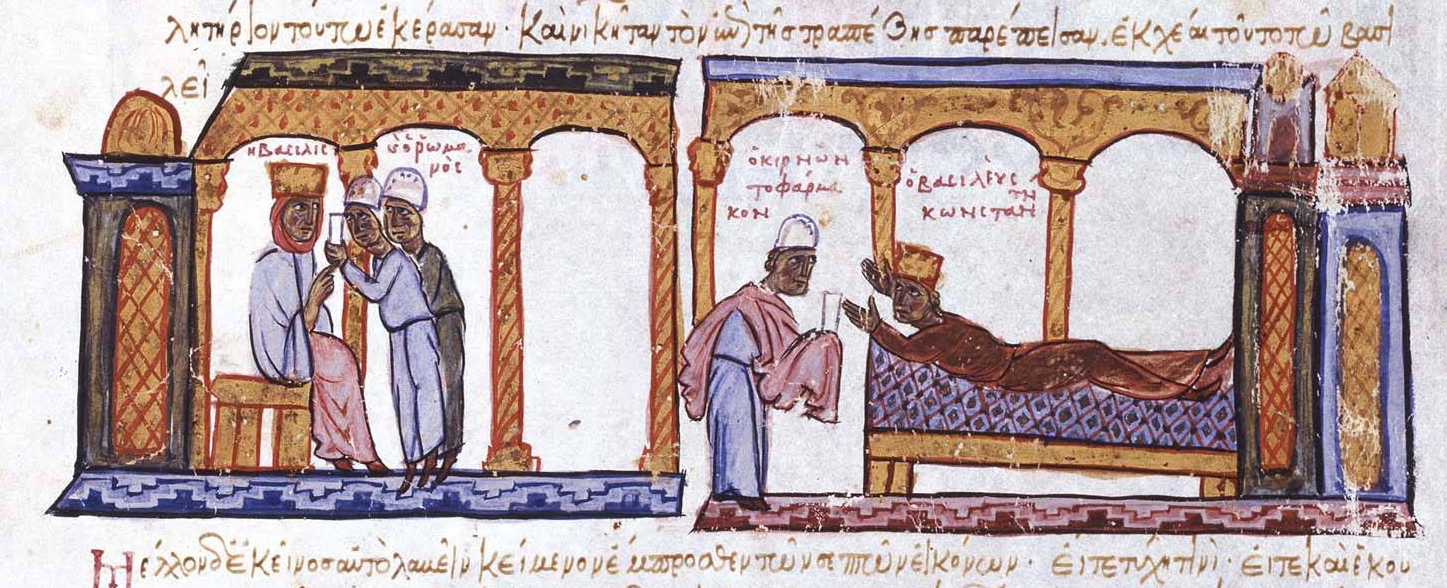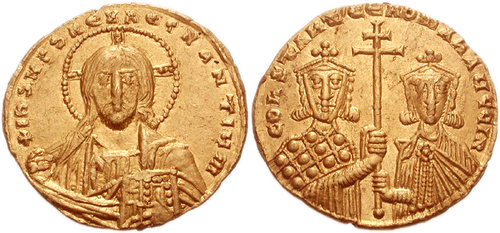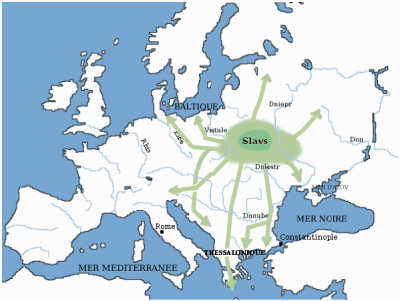|
963
Year 963 (Roman numerals, CMLXIII) was a common year starting on Thursday of the Julian calendar. Events By place Byzantine Empire * March 15 – Emperor Romanos II dies at age 39, probably of poison administered by his wife, Empress Theophano (born Anastaso), Theophano. He is succeeded by his infant son Basil II. Theophano becomes regent and ''de facto'' ruler, naming her other son Constantine VIII (only 3 years old) as co-emperor of the Byzantine Empire. * July 2 – Nikephoros II Phokas is proclaimed emperor by his troops in Kayseri, Caesarea. He sends a fleet to secure the Bosphorus, Bosphorus Strait against his enemies. Chief minister Joseph Bringas gathers support and closes the gates of Constantinople. General Marianos Argyros is killed in a riot, forcing Bringas to flee. * August 16 – Nikephoros II makes a triumphal entry in Constantinople and is hailed as 'the conqueror'. He is crowned emperor in Hagia Sophia. * September 20 – Nikephoros I ... [...More Info...] [...Related Items...] OR: [Wikipedia] [Google] [Baidu] |
Romanos II
Romanos II (; 938 – 15 March 963) was Byzantine Emperor from 959 to 963. He succeeded his father Constantine VII at the age of twenty-one and died suddenly and mysteriously four years later. His wife Theophano helped their sons Basil II and Constantine VIII to ultimately succeed him in 976. Life Romanos II was a son of the Emperor Constantine VII and Helena Lekapene, the daughter of Emperor Romanos I Lekapenos and his wife Theodora. The '' Theophanes Continuatus'' states that he was 21 years old at the time of his accession in 959, meaning that he was born in 938. Named after his maternal grandfather, Romanos was married, as a child, to , the illegitimate daughter of King Hugh of Italy, to bond an alliance. She had changed her name to Eudokia after their marriage, but died an early death in 949, which caused the dissolution of the alliance. On 27 January 945, Constantine VII succeeded in removing his brothers-in-law, the sons of Romanos I, assuming the throne alone. ... [...More Info...] [...Related Items...] OR: [Wikipedia] [Google] [Baidu] |
Nikephoros II Phokas
Nikephoros II Phokas (; – 11 December 969), Latinized Nicephorus II Phocas, was Byzantine emperor from 963 to 969. His career, not uniformly successful in matters of statecraft or of war, nonetheless greatly contributed to the resurgence of the Byzantine Empire during the 10th century. In the east, Nikephoros completed the conquest of Cilicia and retook the islands of Crete and Cyprus, opening the path for subsequent Byzantine incursions reaching as far as Upper Mesopotamia and the Levant; these campaigns earned him the sobriquet "pale death of the Saracens". Early life and career Nikephoros Phokas was born around 912. From his paternal side, he belonged to the Phokas family which had produced several distinguished generals, including Nikephoros' father Bardas Phokas, brother Leo Phokas, and grandfather Nikephoros Phokas the Elder, who had all served as commanders of the field army ('' domestikos tōn scholōn''). From his maternal side he belonged to the Maleinoi, a p ... [...More Info...] [...Related Items...] OR: [Wikipedia] [Google] [Baidu] |
Basil II
Basil II Porphyrogenitus (; 958 – 15 December 1025), nicknamed the Bulgar Slayer (, ), was the senior Byzantine emperor from 976 to 1025. He and his brother Constantine VIII were crowned before their father Romanos II died in 963, but they were too young to rule. The throne thus went to two generals, Nikephoros Phokas (963–969) and John Tzimiskes (r. 969–976) before Basil became senior emperor, though his influential great-uncle Basil Lekapenos remained as the '' de facto'' ruler until 985. His reign of 49 years and 11 months was the longest of any Roman emperor. The early years of Basil's reign were dominated by civil wars against two powerful generals from the Byzantine Anatolian aristocracy: first Bardas Skleros and later Bardas Phokas, which ended shortly after Phokas' death and Skleros' submission in 989. Basil then oversaw the stabilization and expansion of the eastern frontier of the Byzantine Empire and the complete subjugation of the First Bulgarian ... [...More Info...] [...Related Items...] OR: [Wikipedia] [Google] [Baidu] |
August 16
Events Pre-1600 * 1 BC – Wang Mang consolidates his power in China and is declared marshal of state. Emperor Ai of Han, who died the previous day, had no heirs. * 942 – Start of the four-day Battle of al-Mada'in, between the Hamdanids of Mosul and the Baridis of Basra over control of the Abbasid capital, Baghdad. * 963 – Nikephoros II Phokas is crowned emperor of the Byzantine Empire. * 1328 – The House of Gonzaga seizes power in the Duchy of Mantua, and will rule until 1708. * 1513 – Battle of the Spurs (Battle of Guinegate): King Henry VIII of England and his Imperial allies defeat French Forces who are then forced to retreat. * 1570 – The Principality of Transylvania is established after John II Zápolya renounces his claim as King of Hungary in the Treaty of Speyer.Diarmaid MacCullochThe Reformation Viking, 2004, p. 443 1601–1900 * 1652 – Battle of Plymouth: Inconclusive naval action between the fleets of Michiel d ... [...More Info...] [...Related Items...] OR: [Wikipedia] [Google] [Baidu] |
Marianos Argyros
Marianos Argyros (, – 16 August 963) was a Byzantine aristocrat and member of the Argyros family. A monk, in 944 he supported the assumption of sole rule by Constantine VII, and was allowed to leave the monastery and enter imperial service. He held a succession of senior military commands, fighting in southern Italy against local rebels and the Fatimids, and in the Balkans against the Magyars. In 963, he tried to oppose the takeover of the imperial throne by the general Nikephoros Phokas by assuming control over Constantinople and arresting his father, Bardas Phokas the Elder. During the ensuing clashes, he was hit on the head by a platter and died on the next day, 16 August. Life Origin and the palace coups of 944 Marianos was the eldest son of the general Leo Argyros, active in the first decades of the 10th century. He had a brother, Romanos Argyros, who in 921 married Agathe, a daughter of Emperor Romanos I Lekapenos (). The Argyroi therefore were counted among ... [...More Info...] [...Related Items...] OR: [Wikipedia] [Google] [Baidu] |
March 15
Events Pre-1600 * 474 BC – Roman consul Aulus Manlius Vulso celebrates an ovation for concluding the war against Veii and securing a forty years truce. * 44 BC – The assassination of Julius Caesar, the dictator of the Roman Republic, by a group of senators takes place on the Ides of March. * 493 – Odoacer, the first barbarian King of Italy after the fall of the Western Roman Empire, is slain by Theoderic the Great, king of the Ostrogoths, while the two kings were feasting together. * 856 – Michael III, emperor of the Byzantine Empire, overthrows the regency of his mother, empress Theodora (wife of Theophilos) with support of the Byzantine nobility. * 897 – Al-Hadi ila'l-Haqq Yahya enters Sa'dah and founds the Zaydi Imamate of Yemen. * 933 – After a ten-year truce, German King Henry the Fowler defeats a Hungarian army at the Battle of Riade near the Unstrut river. * 1311 – Battle of Halmyros: The Catalan Company d ... [...More Info...] [...Related Items...] OR: [Wikipedia] [Google] [Baidu] |
Theophano (born Anastaso)
Theophano (; – after 978) was a Greek woman from the region of Laconia, who became Byzantine empress by marriage to emperors Romanos II and Nikephoros II. In 963, between the deaths of Romanos and her marriage to Nikephoros, she was regent for her sons, Basil II and Constantine VIII. Contemporary sources have depicted Theophano as scheming and adulterous, although some modern scholars have called this into question. Marriage to Romanos II Theophano was born of Laconian Greek origin in the Peloponnesian region of Lakonia, possibly in the city of Sparta, in 941. Theophano was originally named Anastasia, or more familiarly Anastaso and was the daughter of a poor tavern-keeper called Craterus. Theophano was renowned for her great beauty and heir apparent Romanos fell in love with her around the year 956 and married her against the wishes of his father, Emperor Constantine VII. Theophano's humble origins made her unpopular among Byzantine elites and when ... [...More Info...] [...Related Items...] OR: [Wikipedia] [Google] [Baidu] |
Joseph Bringas
Joseph Bringas () was an important Byzantine eunuch official in the reigns of Emperor Constantine VII (r. 945–959) and Emperor Romanos II (r. 959–963), serving as chief minister and effective regent during the latter. Having unsuccessfully opposed the rise of Nikephoros Phokas to the imperial throne in 963, he was exiled to a monastery, where he died in 965. Biography Historian Leo the Deacon reported that Bringas hailed from Paphlagonia. He gradually rose in imperial service to the rank of ''patrikios'' and the court post of '' praipositos''. Emperor Constantine VII appointed him first as ''sakellarios'' and then as ''Droungarios'' of the Imperial Fleet, the position he held at the time of the emperor's death.. When Emperor Constantine VII's son, Romanos, assumed the Byzantine throne, he appointed Bringas as his ''parakoimomenos'' (chamberlain). The young emperor preferred to spend his time hunting, and largely left affairs of state to him. In this capacity, Bringas foile ... [...More Info...] [...Related Items...] OR: [Wikipedia] [Google] [Baidu] |
Constantine VIII
Constantine VIII (;Also called Porphyrogenitus (), although the epithet is almost exclusively used for Constantine VII. 960 – 11/12 November 1028) was ''de jure'' Byzantine emperor from 962 until his death. He was the younger son of Emperor Romanos II and Empress Theophano (born Anastaso), Theophano. He was nominal co-emperor from 962, successively with his father; stepfather, Nikephoros II Phokas; uncle, John I Tzimiskes; and brother, Basil II. Basil's death in 1025 left Constantine as the sole emperor. He occupied the throne for 66 years in total, making him ''de jure'' the longest-reigning amongst List of Roman emperors, all Roman emperors since Augustus. Constantine displayed a lifelong lack of interest in politics, statecraft and the military, and during his brief sole reign the government of the Byzantine Empire suffered from mismanagement and neglect. He had no sons and was instead succeeded by Romanos Argyros, husband of his daughter Zoe Porphyrogenita, Zoe. Fami ... [...More Info...] [...Related Items...] OR: [Wikipedia] [Google] [Baidu] |
July 2
This date marks the halfway point of the year. In common years, the midpoint of the year occurs at noon on this date, while in leap years, it occurs at midnight (start of the day). Events Pre-1600 * 437 – Emperor Valentinian III begins his reign over the Western Roman Empire. His mother Galla Placidia ends her regency, but continues to exercise political influence at the court in Rome. * 626 – Li Shimin, the future Emperor Taizong of Tang, ambushes and kills his rival brothers Li Yuanji and Li Jiancheng in the Xuanwu Gate Incident. * 706 – In China, Emperor Zhongzong of Tang inters the bodies of relatives in the Qianling Mausoleum, located on Mount Liang outside Chang'an. * 866 – Battle of Brissarthe: The Franks led by Robert the Strong are defeated by a joint Breton-Viking army. * 936 – King Henry the Fowler dies in his royal palace in Memleben. He is succeeded by his son Otto I, who becomes the ruler of East Francia. * 963 – ... [...More Info...] [...Related Items...] OR: [Wikipedia] [Google] [Baidu] |
Slavs
The Slavs or Slavic people are groups of people who speak Slavic languages. Slavs are geographically distributed throughout the northern parts of Eurasia; they predominantly inhabit Central Europe, Eastern Europe, Southeastern Europe, and Northern Asia, though there is a large Slavic minority scattered across the Baltic states and Central Asia, and a substantial Slavic diaspora in the Americas, Western Europe, and Northern Europe. Early Slavs lived during the Migration Period and the Early Middle Ages (approximately from the 5th to the 10th century AD), and came to control large parts of Central, Eastern, and Southeast Europe between the sixth and seventh centuries. Beginning in the 7th century, they were gradually Christianized. By the 12th century, they formed the core population of a number of medieval Christian states: East Slavs in the Kievan Rus', South Slavs in the Bulgarian Empire, the Principality of Serbia, the Duchy of Croatia and the Banate of B ... [...More Info...] [...Related Items...] OR: [Wikipedia] [Google] [Baidu] |
Gero
Gero I ( 900 – 20 May 965), sometimes called the Great (),Thompson, 486. Also se was a nobleman from East Francia who ruled an initially modest march centred on Merseburg in the south of the present German state of Saxony-Anhalt, which he expanded into a vast territory named after him: the ''marca Geronis''.Thompson, 639–640. During the mid-10th century, he was the leader of the Saxon '' Ostsiedlung''. Succession and early conflicts Gero was the son of Count Thietmar, tutor of Henry the Fowler. He was appointed by King Otto of Saxony to succeed his brother, Siegfried, as count and margrave in the district fronting the Wends on the lower Saale in 937. His appointment frustrated Thankmar, the king's half-brother and Siegfried's cousin, and together with Eberhard of Franconia and Wichmann the Elder, he revolted against the king (938). Thankmar was dead within a year and his accomplices came to terms with Otto. Gero kept his march. During the insurrection of his op ... [...More Info...] [...Related Items...] OR: [Wikipedia] [Google] [Baidu] |









